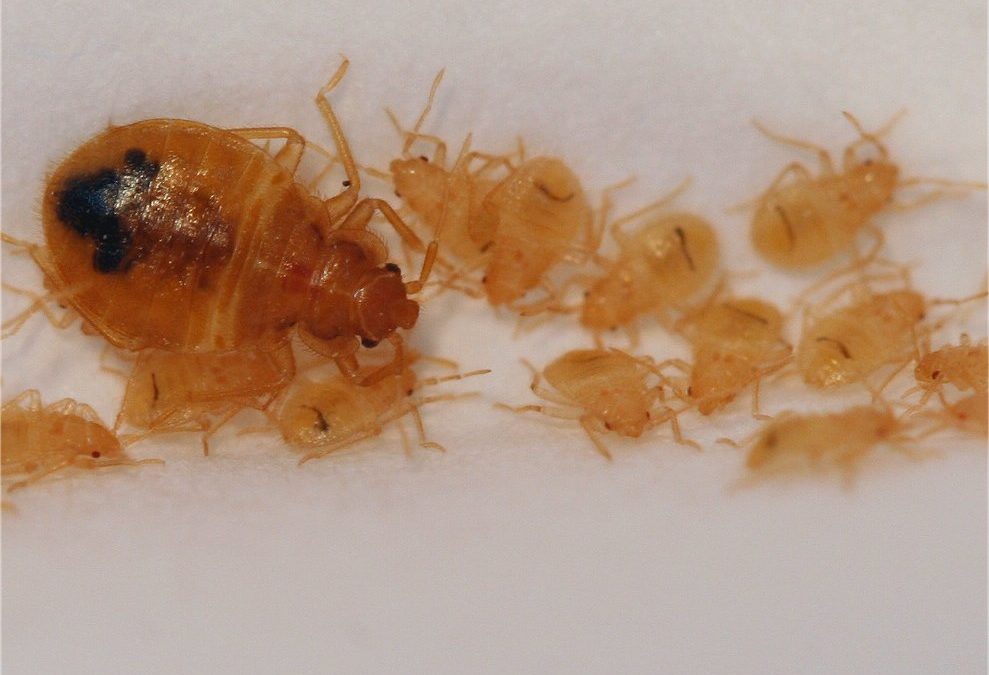Bed bugs have an uncanny ability to thrive just about anywhere. They easily hitch rides on your clothes, backpacks, suitcases, etc. and make themselves at home. The only problem is that it’s not their home; it’s yours.
Stopping a bed bug infestation in the early stages is absolutely critical. If you see just one bed bug, the chances are high that there are many others and you are dealing with an infestation.
It is best to take every precaution possible and act as if there is an active infestation. One of the best methods of curbing an infestation quickly and effectively is using a non-toxic and readily available solution like Cryonite to freeze them to death.
Learn more about recognizing the early signs of bed bugs and how to quickly end an infestation below.
1. Feces and Fecal Stains
In case you haven’t noticed, bed bugs are not very considerate guests. They leave feces just about everywhere. You will likely notice black fecal stains in areas like the corners or seam of a mattress or piece of furniture. Furthermore, you may see tiny specks of feces on pieces of wood, in your carpet, or on the walls. Take note of black streaks on your sheets, pillowcase, baseboards, etc. The more feces and fecal stains that you see, the larger the infestation likely is.
2. Blood Smears and Stains
Much like fecal matter, bed bugs leave bloodstains on your sheets, pillowcases, on furniture, and any other areas that they have infested. When a bed bug is crushed, bloodstains are much more prevalent. Bloodstains left by bed bugs will usually be brown with slight red discoloration. If you see bloodstains in combination with feces, shell casings, and/or corresponding bites on your body, then the chances are high that your home has been infested.
3. Red and Itchy Bed Bug Bites
It can be difficult to differentiate a bed bug bite from the bites of other insects like mosquitos, spiders, etc. Sometimes you may not feel them at all, and other ties they may be incredibly itchy. If you have been bitten, bed bug bites have the following characteristics:
- Bed Bug bites usually appear in clusters. Many times they will come in groups of three. This is often called the “breakfast, lunch, and dinner” bites. Most other bug bites will be in random locations and not centralized in one area.
- Most people have a slight allergic reaction to bed bug bites which often causes an itchy rash around the bite area. A small percentage of people will not have an allergic reaction initially and it may take many bites for any type of rash to form.
- In most instances bed bug bites are bright red and create a bump in the area of the bite. However, this is not always the case.
4. Discarded Shells
As bed bugs mature, they shed their shells (also referred to as cuticles or casings). This shedding happens five times as they move from a nymph to a full-grown bed bug. If you notice discarded shells, then you are likely dealing with an infestation. Search for areas that shell casings are likely to be found like corners, mattress seams, baseboards, etc.
5. The Smell of an Infestation
Not only do bed bugs leave feces, bloodstains, and shells, but they also release a very unpleasant sweaty and musty odor. The larger the infestation, the more pungent the smell will be.
6. Eggshells
One bed bug can lay as many as 100 eggs per month. When those eggs have matured, they then have the capacity to lay just as many eggs. This is how a small infestation can quickly grow to a much larger one.
It is important to kill them as soon as possible, which is why Cryonite is a great tool to use. You don’t have to wait for an exterminator and can begin killing bedbugs and their eggs as soon as you see them.

